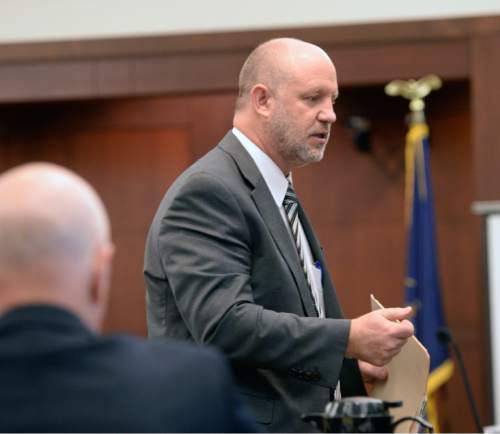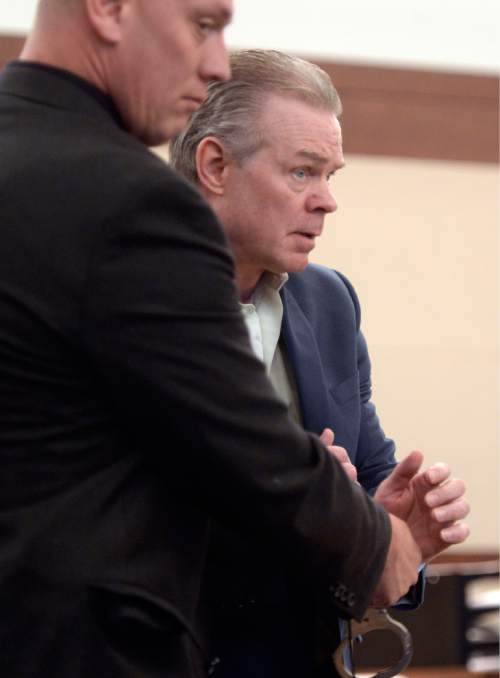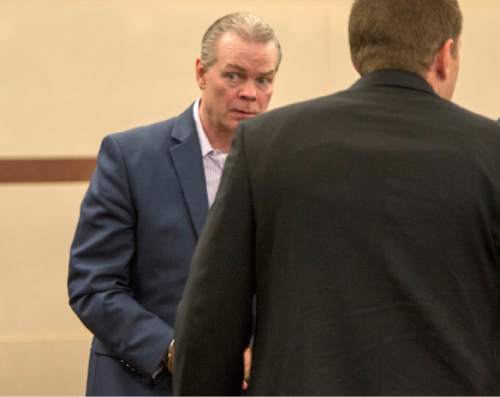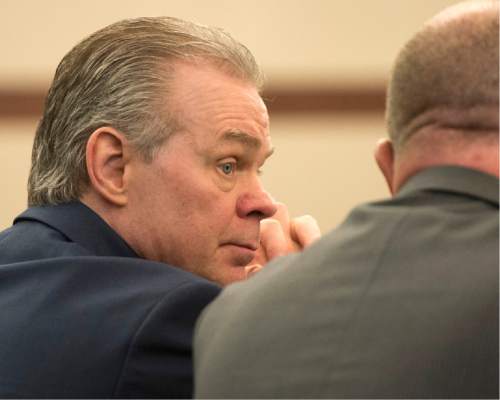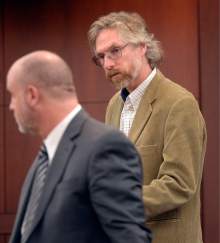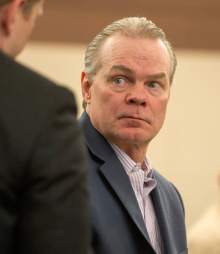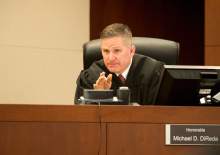This is an archived article that was published on sltrib.com in 2015, and information in the article may be outdated. It is provided only for personal research purposes and may not be reprinted.
Ogden • For six years after Joyce Yost disappeared, only Douglas Anderson Lovell and one other person knew what had happened to the woman.
Lovell's wife, Rhonda Buttars, knew that on August 10, 1985, Lovell kidnapped Yost, took her to the mountains east of Ogden and strangled her.
But after six years of silence, Buttars — who divorced Lovell in 1990 — met with a police detective in 1991, and confessed everything she knew.
Monday in 2nd District Court — testifying in the penalty phase of Lovell's aggravated murder trial — the woman said she felt "relieved" when the truth came out.
"I wanted to get it out," Buttars testified. "I was sick of knowing what Doug had done and no one knew. I'm glad [the detective] came because he relieved me of that guilt."
And in exchange for her cooperation — the woman wore a police recording device to the prison that year and recorded Lovell confessing to the crime — South Ogden police Detective Terry Carpenter made her a promise: As long as she wasn't the one who killed Yost, she would not be charged with any crimes.
Defense attorney Michael Bouwhuis pointed out Monday that Buttars may not have killed Yost, but she was indeed involved: She knew Lovell was fixated on killing the 39-year-old woman to keep her from testifying against him in a rape case. She twice drove him to Yost's apartment to scout out a way to break in, and she picked him up after the murder.
Bouwhuis said during his opening statement that there is a "gap" between the punishments received by Buttars and Lovell. Where Buttars walked away without ever going to jail, Lovell is now facing possible execution for the crime.
Two weeks ago, 12 jurors found Lovell, now 57, guilty of aggravated murder for Yost's death. The jury must now decide whether Lovell should be executed for the crime. Closing arguments and jury deliberations are expected Tuesday.
Portions of the penalty phase has focused on where Lovell stashed Yost's body 30 years ago. He told authorities he had left the dead woman near Snowbasin Ski Resort, though her body was never found after an extensive search of the area in 1993.
Wildlife ecologist David Stoner testified Monday that it is possible that animals moved Yost's body from the Snowbasin location, which could explain why the remains were never found.
Stoner said mountain lions, black bears and coyotes live in the area, and that mountain lions are known to move their prey, bury parts of carcasses and return later to uncover and feed on them.
Under cross-examination, Stoner said it would be unlikely, however, that the animals would take any interest in moving Yost's purse, which was buried near her, or to take any of her jewelry.
While Lovell told police the body was near the ski resort, Buttars testified on Monday that her ex-husband told her that the body was near Causey Reservoir — about 20 miles from the Snowbasin area east of Ogden Valley.
A former prison inmate, Jared Briggs, testified Monday that Lovell told him Yost's body was near "a lake with a Boy Scout camp behind it." He said that the killer told him he tied a cinder block to Yost's body, then swam out into the reservoir and let her sink.
In an attempt to discredit Brigg's testimony, Lovell's defense team called to the stand another death row inmate, Ralph Menzies, who testified that Briggs was able to read through Lovell's court papers one day in 2006 when he kept them overnight in his cell during a lockdown.
Menzies — convicted of kidnapping and killing 26-year-old Maurine Hunsaker in 1986 — is appealing his own execution.
Also Monday, corrections supervisor Carl Jacobson testified that he once confronted Lovell about the location of Yost's body, telling him that her family deserves to have a burial site they could visit.
"I stated that this was still torture," Jacobson said. "She was still a victim. Her family deserved a place of rest. She deserved to come home and be warm."
Jacobson testified that Lovell told him that the 1993 search for the woman's body was faulty, and that the investigators did not look far enough or deep enough into the ground.
"I responded that it was f—ing bullshit," Jacobson said. "That he's a mountain man, he knows the outdoors. He knows where it's at … [I told him] there's three reasons why this body isn't back. It's mutilated, that there's trauma or you put it through a meat grinder. Or it's a mass grave. The third reason is [that it's] both."
But Jacobson said Lovell denied these allegations, again placing blame on the detectives who scoured the mountains for days on end in June 1993.
When asked to describe the inmate, Jacobson said Lovell could be "cooperative, manageable and very smart," but on the flip side, he said the killer could be "cold, calculating and controlling." He told jurors that he considered Lovell an escape risk and dangerous if he ever were paroled.
Despite Lovell's efforts to prevent Yost from testifying against him in the rape case, he was nevertheless convicted by a jury of aggravated kidnapping and aggravated sexual assault in December 1985, with the help of a transcript from Yost's preliminary hearing testimony.
Lovell has since been serving a 15-years-to-life term at the Utah State Prison.
In 1993, an Ogden judge sentenced Lovell to death for Yost's murder, but the case came back on appeal in 2011, when the Utah Supreme Court ruled the defendant could withdraw his guilty plea because he should have been better informed of his rights during court proceedings.
Twitter: @jm_miller





